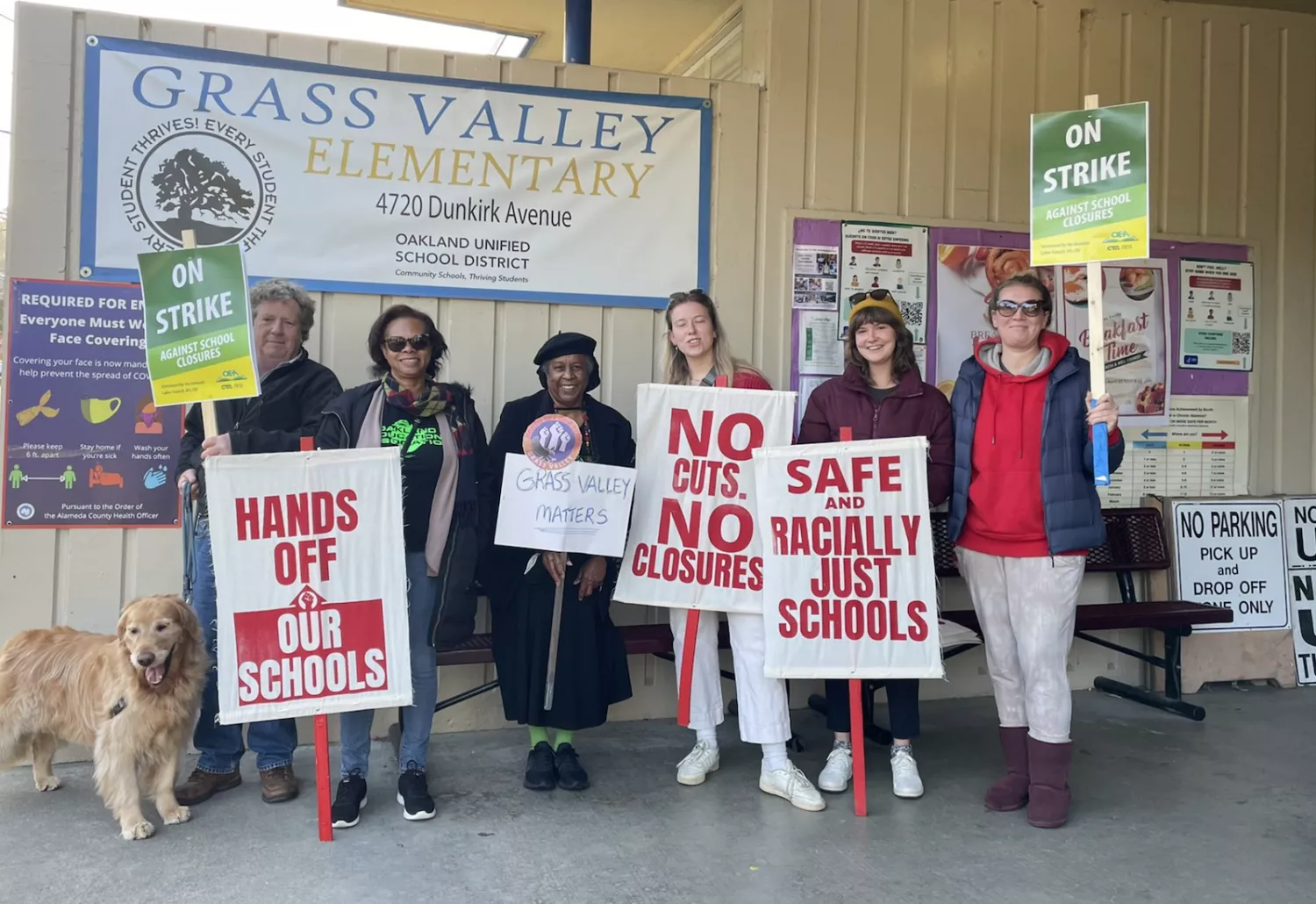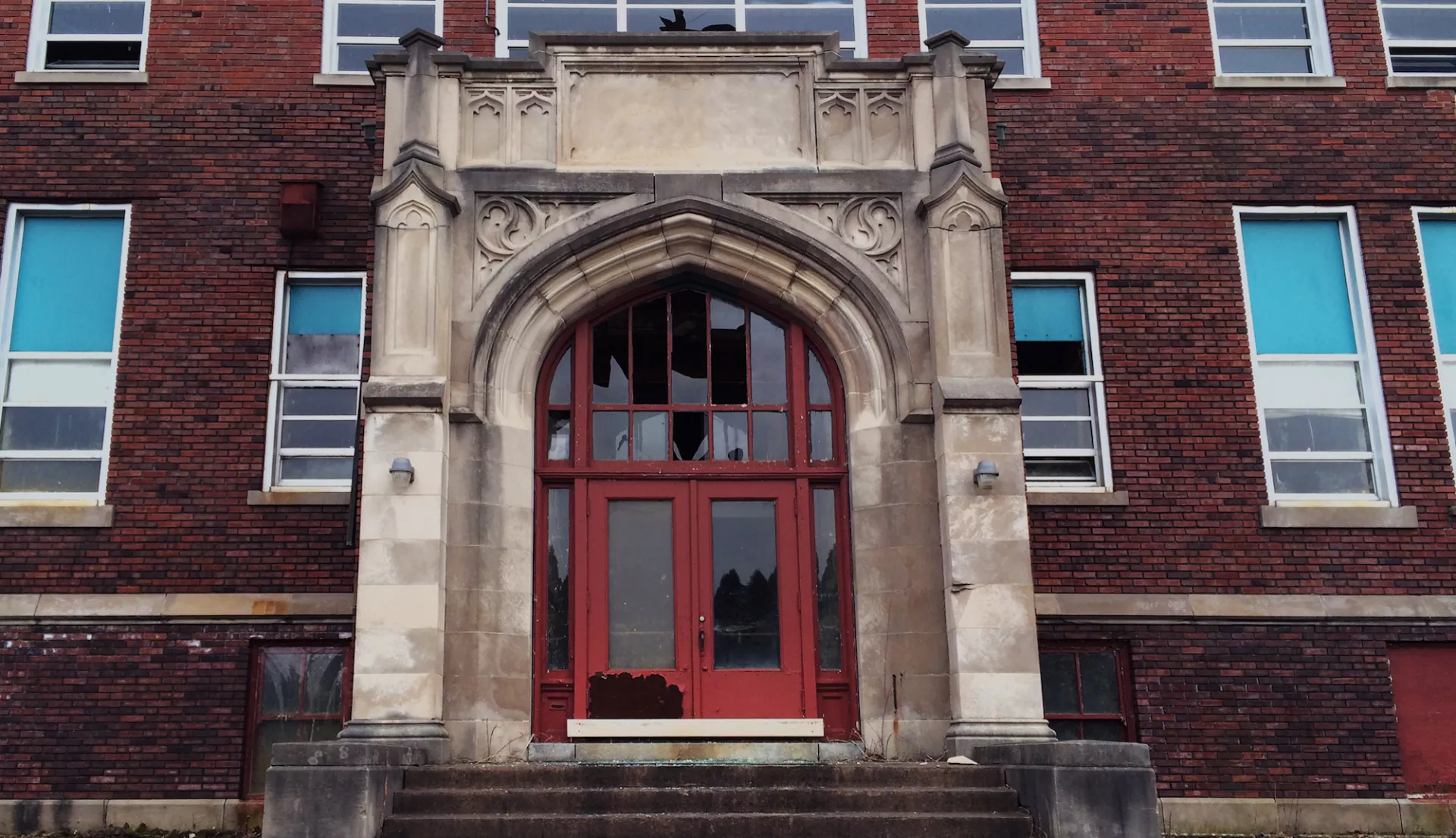Key Takeaways
- Educators know these closures harm students, families, and communities.
- In Oakland, after a year-long effort by educators and parents, the school board reversed a decision to close schools attended predominantly by Black students.
- Elections matter. In Oakland and Denver, which also rejected a school closure plan, educators and parents recently elected school board members who pledged to listen to their communities—and those board members did just that.
It took a one-day strike by educators, multiple walkouts by students, and the election of two new school board members by Oakland voters—but the Oakland school board voted this month to stop its plan to close six neighborhood schools with predominantly Black and brown student populations.
“This victory belongs to so many educators, parents, students, and community members who marched, rallied, and spoke out at school board meetings, who went on strike, filed lawsuits and occupied Parker [Elementary School], and who donated money and knocked on doors during the election,” wrote Keith Brown, president of the Oakland Education Association (OEA), in an email to union members.
“I have lived through the closure of two dozen Oakland schools over the past twenty years,” he continued. “And now I have lived through something far better—a new progressive school board fighting with us, not against us, to keep our schools open.”
The board’s reversal caps more than a year’s worth of focused efforts by OEA members, in collaboration with students, parents, and other community members, to protect the city’s most vulnerable students. Their success proves that a coalition of educators and parents can impact the political decisions that affect kids.
And it’s not just Oakland. In recent weeks, Denver school board members also reversed a decision to close five schools, attended by Black and brown students mostly, after a concerted effort by educators and parents.
In both places, board members said they were trying to save money. But at what cost to Black and brown students, educators and parents asked. The efforts to close their schools have been traumatizing to students, and they mask the solutions that educators know would really help their schools and students.
What This Means for Students and Communities
When neighborhood schools close, whether it’s in urban or rural communities, students are forced to attend schools farther from their homes. The new distance—plus the trauma of displacement—can affect student attendance and performance.
Mara Casey Tieken, a Bates College professor and researcher of rural schools, points to studies that show student test scores and grade point averages in Chicago, Milwaukee and other places fell in the year before and immediately after schools closed. “Students also may become less involved in after-school clubs and sports, even if the number of extracurricular options expands. For those in sparsely populated rural places…this is probably due to their long commute,” she writes.
Parents, especially from lower-income families without reliable transportation, also face challenges in getting to their children's schools. This curtails their opportunities to volunteer in classrooms or attend after-school plays or sporting events—or even parent-teacher conferences.
The efforts to close schools have been traumatizing to students, and they mask the solutions that educators know would really help their students.
Closures also affect the health of communities. In rural areas, they may be the biggest employer. Everywhere, they’re places that “tie people together,” Tieken says. Meanwhile, Tieken hasn’t found evidence that school closures actually save money—which is the purported goal.
Instead of closing schools, educators say school boards should invest in community schools that focus on what students in the community truly need to succeed, such as free meals, after-school, mental-health supports, etc.
The Racial Implications of Closing Schools
What’s been happening in Oakland isn’t new. Nearly a decade ago, Chicago Public Schools announced it would close 50 schools, 90 percent of which served all-black student populations. Since then, closing schools in Black and brown communities has become a simplistic response to complex problems.
“People see blackness as a proxy for low-quality and the presence of black children as a proxy for badness,” said Eve Ewing, author of “Ghosts in the Schoolyard: Racism and School Closings on Chicago’s South Side," to NEA Today in 2019.
What they don’t see (or what they choose to ignore) is “how current policies reinscribe and reinforce racial inequalities,” said Ewing, “and the way the education system interacts with other stratified systems in our society to ensure [Black] students don’t have the same resources or opportunities.”
This is an especially familiar story in Oakland where more than two dozen, majority-Black schools were closed in the early 2000s, during the state’s six-year takeover of Oakland Unified School District. At the same time, the state “opened the door for experimentation from wealthy, mostly White philanthropists with no ties to Oakland,” noted the Washington Post in a recent article about Oakland’s school closures.

In other words, at the same time state officials were closing schools in Oakland’s Black neighborhoods, they opened more than 30 charter schools. (Those charter schools siphoned $57 million out of public schools and haven’t done any better than the neighborhood schools, in terms of student performance, the Post notes.)
The recent plan in Oakland, which school board members approved last year, has the same racial overtones. While Black students account for just one-fifth of the overall Oakland student body, at four of the seven schools slated for closure, more than half of students are Black.
The same is true in Denver, where the superintendent recommended closing five neighborhood schools this year. All five serve predominantly Black and Latino students. “
"It seems like what tends to happen in Denver and also in our country is that our students of color, our communities of color really take the brunt of these choices," Denver Classroom Teachers Association President Robert Gould told Denver’s 9 News.
Elections Matter
At a school board meeting last month, Denver educators and parents urged school board members to reject the plan. “These kids are the reason I teach—and they deserve to know their home will not be taken from them. I’m here to do everything I can to protect the environment that allows them to thrive and prosper,” third-grade teacher Megan Randall told Denver school board members last month.
“Closing these schools is perpetuating the systemic racism that we know exists in the education system because, once again, it will only affect Black and brown students,” she added.
"Our students want to be at school. They enjoy it and they're thriving," 28-year teacher Tracy McKeehan told school board members. "This is unnecessary trauma for our students. They're confused and scared because adults in this district have decided to propose decisions without thinking about how it will affect [students].
"Start again," McKeehan urged, "from a place of equity, in a way that is community led."
School board members agreed. With a 6-1 vote, they told Denver's superintendent to go back to the drawing board and involve community members in future decisions.
“If we vote yes to close the schools in this manner, we are saying we don’t respect you,” Denver board member Michelle Quattlebaum said, according to Chalkbeat Colorado. “If we vote no to close the schools in this manner, we are saying we respect you enough to have an honest conversation with you and come up with a plan.”
In both Oakland and Denver, it’s clear that elections matter. In 2021, DCTA members helped elect four new school board members who promised to value the voices of educators—and all four voted against the closures. In Oakland, educators and parents elected two new board members in November who campaigned against the closures. This month, their two votes made the critical difference in the board’s 4-2 vote to save those schools.
What’s Next for Oakland
Although Oakland educators and parents were able to stop the school closures, the process was long and painful. It has been nearly 12 months since the Oakland school board first voted, in February 2022, to close the schools.
In the subsequent months, Oakland union members held a one-day strike in April; two school employees suffered through an 18-day hunger strike; parents staged a 125-day occupation of an Oakland school that eventually closed; and the American Civil Liberties Union of Northern California filed a lawsuit with the California Department of Justice, imploring the attorney general to investigate the school closures and their impact on Black and brown students.
“It shouldn’t have taken this long for our leaders to listen to our voices and do what is right for students,” said Brown. “We cannot ignore the harm this has caused to our most vulnerable, whose lives were upended since this debate began.”
Now, he said, educators will have to do the work of repairing that stress and damage, while continuing to fight for the racially just schools their students deserve.
Their next opportunity to make a difference may be through contract negotiations. Three years ago, after a weeklong strike, Oakland union leaders negotiated a contract that provided for smaller class sizes, more support staff, salary raises to keep teachers in the classroom, and a moratorium on school closures.
Now, this spring, union leaders are determined to negotiate a new contract that “supports schools that are safe, stable, and racially just,” says Brown.


